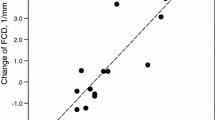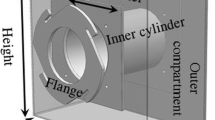Abstract
The effect of heat stress on capillary blood flow (CBF) distribution was examined in laying hens, using 15 micron microspheres, by determining CBF before and after elevating body temperature by 1–2°C. No change was evident in unfeathered metatarsal skin, although its temperature increased by 7°C. Breast skin CBF change was 3.5 times larger than that of back skin. Comb CBF increase was larger than in wattles. CBF in upper respiratory tract increased proportionally to increment in respiratory frequency. Digestive system CBF was reduced by hyperthermia: the effect was pronounced in its upper organs (46% of normal) and decreased along the tract. CBF increased 4-fold in an expiratory abdominal muscle, a smaller rise occurred in a pectoral muscle and no change in a leg muscle. CBF in the tibia fell to 64% of normal. In the reproductive system, CBF fell to 58% of control level in the uterus, to 70–80% in the larger ovarian follicles and infundibulum with no significant changes in magnum and isthmus. Cerebral CBF increased during hyperthermia.
Heat stress significantly reduced CBF to inner body organs, with marked differences between systems as well as within systems. Changes were more pronounced on 2°C hyperthermia than on 1°C hyperthermia.
Similar content being viewed by others
References
Baudinette RV, Loveridge JP, Wilson KJ, Mills CD, Schmidt-Nielsen K (1976) Heat loss from feet of herring gulls at rest and during flight. Am J Physiol 230:920–924
Bernstein MH (1974) Vascular responses and foot temperature in pigeons. Am J Physiol 226:1350–1355
Boelkins JN, Mueller WJ, Hall KL (1973) Cardiac output distribution in the laying hen during shell formation. Comp Biochem Physiol 46a:735–743
Boelkins JN, Mazurkiewicz M, Mazur PE, Mueller WJ (1976) Changes in blood flow to bones during the hypocalcemic and hypercalcemic phases of the response to parathyroid hormone. Endocrinology 98:403–412
Calder WA, Schmidt-Nielsen K (1968) Panting and blood carbon dioxide in birds. Am J Physiol 215:477–482
Colton JS, Frankel HM (1972) Cerebrovascular responses to CO2 during hyperthermia. Am J Physiol 223:1041–1043
Ederstrom HE (1954) Blood flow changes in the dog during hyperthermia. Am J Physiol 176:347–351
Frankel HM, Frascella D (1968) Blood respiratory gases, lactate and pyruvate during thermal stress in the chicken. Proc Soc Exp Biol Med 127:997–999
Frankel H, Hollands KG, Weiss HS (1962) Respiratory and circulatory responses of hyperthermic chickens. Arch Int Physiol Biochim 70:555–563
Hales JRS (1973a) Effects of exposure to hot environments on the regional distribution of blood flow and on cardiorespiratory function in sheep. Pflügers Arch 334:133–148
Hales JRS (1973b) Effects of heat stress on blood flow in respiratory muscles in the sheep. Pflügers Arch 345:123–130
Hales JRS (1973c) Effects of exposure to hot environments on total and regional blood flow in the brain and spinal cord of the sheep. Pflügers Arch 344:327–337
Hales JRS, Dampney RAL (1975) The distribution of cardiac output in the dog during heat stress. J Ther Biol 1:29–34
van Handel-Hruska JM, Wegner TN, Nordstrom JO (1977) Avian cardiovascular responses following high environmental temperature acclimation (abstract). Fed Proc 36:524
Iriki M, Riedel W, Simon E (1971) Regional differentiation of sympathetic activity during hypothalamic heating and cooling in anesthetized rabbits. Pflügers Arch 328:320–331
Johansen K, Millard RW (1973) Vascular responses to temperature in the foot of the giant fulmar (Macronectes giganteus). J Comp Physiol 85:47–64
Kawashiro T, Scheid P (1975) Arterial blood gases in undisturbed resting birds: Measurements in chicken and duck. Respir Physiol 23:337–342
Kindermann W, Pleschka K (1973) Local blood flow and metabolism of the tongue before and during panting in the dog. Pflügers Arch 340:251–262
Kullman R, Schonung W, Simon E (1970) Antagonistic changes of blood flow and sympathetic activity in different vascular beds following central thermal stimulation I: Blood flow in skin, muscle and intestine during spinal cord heating and cooling in anesthetized dogs. Pflügers Arch 319:146–161
Leduc B (1972) The effect of hyperventilation on maternal placental blood flow in pregnant rabbits. J Physiol 225:339–348
Lucas AM, Stettenheim PR (1972) Avian anatomy. Integument, Part II. US Government Print Off, Washington DC, pp 421–438
Marder J (1973a) Body temperature regulation in the brown-necked raven (Corvus corax ruficollis). I. Metabolic rate, evaporative water loss and body temperature of the raven exposed to heat stress. Comp Biochem Physiol 45A:421–430
Marder J (1973b) Temperature regulation in the Bedouin fowl (Gallus domesticus). Physiol Zool 46:208–217
Moynihan JB, Edwards NA (1975) Blood flow in the reproductive tract of the domestic hen. Comp Biochem Physiol 51A:745–748
Mueller WJ (1976) Egg shell and skeletal metabolism. In: Sturkie PD (ed) Avian physiology. Springer, Berlin Heidelberg New York, pp 320–326
Nolan WF, Weathers WW, Sturkie PD (1978) Thermally induced peripheral blood flow changes in chickens. J Appl Physiol 44:81–84
Oakes GK, Walker AM, Ehrenkranz RA, Cefalo RC, Chez RA (1976) Uteroplacental blood flow during hyperthermia with and without respiratory alkalosis. J Appl Physiol 41:197–201
Odlind B (1978) Blood flow distribution in the renal portal system of the intact hen. A study of a venous system using microspheres. Acta Physiol Scand 102:342–356
Richards SA (1971) The significance of changes in the temperature of the skin and body core of the chicken in the regulation of heat loss. J Physiol 216:1–10
Richards SA (1974) Aspects of physical thermoregulation in the fowl. In: Monteith JL, Mount LE (eds) Heat loss from animals and man. Butterworths, London, pp 255–275
Riedel W, Iriki M, Simon E (1972) Regional differentiation of sympathetic activity during peripheral heating and cooling in anesthetized rabbits. Pflügers Arch 332:239–247
Roman-Ponce H, Thatcher WW, Caton D, Barron DH, Wilcox CJ (1978) Effects of thermal stress and epinephrine on uterine blood flow in ewes. J Anim Sci 46:167–174
Rowell LB (1974) Human cardiovascular adjustments to exercise and thermal stress. Physiol Rev 54:75–159
Simkiss K, Taylor TG (1971) Shell formation. In: Bell DJ, Freeman BM (eds) Physiology and biochemistry of the domestic fowl. Academic Press, London, pp 1331–1343
Steen I, Steen JB (1965) The importance of the legs in the thermoregulation of birds. Acta Physiol Scand 63:285–291
Thauer R (1965) Circulatory adjustments to climatic requirements. In: Handbook of physiology. Circulation, Sect 2, Vol III. Am Physiol Soc, Washington DC, pp 1921–1966
Walter OE, Iriki M, Simon E (1970) Antagonistic changes of blood flow and sympathetic activity in different vascular beds following central thermal stimulation. II. Cutaneous and visceral sympathetic activity during spinal cord heating and cooling in anesthetized rabbits and cats. Pflügers Arch 319:162–184
Whittow GC, Sturkie PD, Stein G (1964) Cardiovascular changes associated with thermal polypnea in the chicken. Am J Physiol 207:1349–1353
Wolfenson D, Berman A, Frei Yael F, Snapir N (1978) Measurement of blood flow distribution by radioactive microspheres in the laying hen (Gallus domesticus). Comp Biochem Physiol 61A:549–554
Wolfenson D, Frei Yael F, Snapir N, Shemesh M, Berman A (1979) Involvement of the cardiovascular system in heat loss and egg production during heat stress in the laying hen (abstract). 8th Internat Bio-meteorol Congr
Author information
Authors and Affiliations
Rights and permissions
About this article
Cite this article
Wolfenson, D., Frei, Y.F., Snapir, N. et al. Heat stress effects on capillary blood flow and its redistribution in the laying hen. Pflugers Arch. 390, 86–93 (1981). https://doi.org/10.1007/BF00582717
Received:
Accepted:
Issue Date:
DOI: https://doi.org/10.1007/BF00582717




